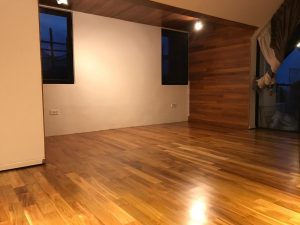This blog is written from the point of view of a contractor in the wood industry, although some of our points would be generally applicable across the entire construction industry including concrete, steel, glass, etc. It is no secret that renovation costs are expensive in Singapore and this blog aims to share the relevant insights from vendors. Customers or house owners usually evaluate the justification of renovation prices based on how much they value the promised end products, but contractors or vendors usually decide on the pricing mostly to at least cover their costs to execute the works well.
What are the different costs that contractors have to cover? To keep things as simple as possible, we can segregate the costings to three types of costs:
- Material Costs
- Manpower Costs
- Overhead Costs
We will discuss each cost category briefly and see how some “unnecessary” costs become necessary due to the unideal economic climate.
1. Material Costs
Singapore is a very small country with very limited land and resources. Naturally a significant portion of all our construction materials come from overseas’ plants, where economies of scale can be more easily achieved with low labour and low factory rental costs. In the wood industry, most of our wood materials come from overseas. Burmese Teak wood floors – standard bedroom floors – come from Myanmar. Chengal wood – a popular option for decking and fencing- comes from Malaysia. Composite wood and engineered wood come from China mostly and a few other European countries. While many house owners are aware of this, many ignore or do not relate to the additional shipment costs required to get these materials to Singapore. This cost of shipment has to be incurred and ultimately passed over to house owners.


2. Manpower Costs
Construction workers in Singapore are usually foreign migrant workers from Malaysia, China, Bangladesh and India because the locals do not want to take up construction workers’ jobs. It is a very truthful assumption that these foreign workers take home salaries that are less than what a local earns on average. However, many house owners do not realize that contractors have to pay two additional costs to employ these migrant workers.
The first additional cost is their accommodation. If a migrant worker is staying in a dormitory, the contractor can expect to pay up to $400 per head per month.
The second additional cost is more unbearable: foreign worker levy. Depending on the race and skill levels of a migrant worker, the levy imposed by local authority could be between $300 to $950 per head per month. Non-Malaysians, which are the huge majority of the construction workforce, are levied between $600 to $950. It is not uncommon to have a foreign worker whose take-home salary is even less than the levy at $950.
This blog is not to debate whether or not foreign worker levy is necessary, as clearly there is a need to control the inflow of foreigners into the country. Besides, this cost is ultimately also passed on to house owners. It is, however, rather disappointing that house owners at times accuse vendors of overcharging with the assumption that foreign workers cost cheaply to the company. To put things into a meaningful perspective, the cost of a foreign worker to a contractor including his accommodation and foreign worker levy is effectively very much equivalent to an admin job taken by many Singaporeans.
Consider the $950 levy – the higher end. You may break down a $950 monthly levy to $36 daily levy per head (divided by 26 working days). If you have three foreign workers working at your house, that is $36 x 3 = $108 daily levy and most owners do not realize it. If the job requires 5 working days to complete with 3 workers, that is a $540 foreign worker levy incurred by house owners.
3. Overhead Costs
This is the trickiest cost to educate from all three costs mentioned as many do not even understand what overhead means. Customers or house owners tend to only see the material and manpower costs as these two are easily visible by everyone. Overhead costs tend to be “behind-the-scene” costs that are necessary and they include:
- Office and admin expenses
- Operation expenses
- Marketing expenses
- Wastage of free consultation expenses

While many clearly understand that materials and labours are solid costs, many fail to see that the salesmen’s salaries and office expenses are also considerable costs to the company. In order for a house owner to entrust their deposit payment to the contractor, there needs to be a trustworthy salesman and in many cases, a legit brick and mortar office running the business behind the scene.
Operation expenses are much more complicated than just the visible materials installed in owners’ houses. Contractors desperately need their own vehicles, whether rented or purchased, to transport workers and tools to their respective sites. Otherwise, we would see foreign workers with their tools in public trains and buses. Not only that this will slow down the speed of the work, but it may also cause some annoyance to the public. Having a vehicle also means incurring the costs of diesel and parking.
Marketing is very essential in business. It is in fact what triggers the first point of contact between potential buyers and sellers. Any active marketing also comes at considerable costs, whether the contractor engages in digital marketing or more traditional methods like giving our flyers or engaging a door-to-door marketer. Unless a contractor has a pool of regular customers big enough to keep generating constant sales every month, the contractor needs to spend some significant dollars in an attempt to constantly generate new inflow of enquirers to keep business afloat.
The last expense we would like to share is the expense of wasted consultation time between a contractor and a potential buyer who do not strike a deal with each other. It should not be a surprise that only less than a quarter of enquirers end up striking a deal with the contractor. This raises the question: Who pays for the “lost hours” of salesmanship or office time incurred for no-deal enquiries? While it is probably fair for contractor to bear the cost if they feel they are unable to execute the work required mentioned in advance, most of the time deals break down due to cost reason from owners – either they do not have the necessary ability and willingness to pay for the work or they decide to engage another contractor after asking around for free. In the end, there has to be some premium added to the customers who actually engage the services of the contractor to cover the cost of these lost office and salesmanship hours spent on those who withdraw. It may be worth noting that those who withdraw may do so unethically as well, such as by using one’s price and ideas/solutions to ask other vendors to match or do better.
In summary, the cost of renovation is often underestimated because there are many behind-the-scenes costs that customers are not aware of. The big bulk of these invisible costs are overhead costs on first rank and migrant worker levy on second. These invisible costs could total to a similar amount of the visible costs – materials and manpower – or even more.
Contact Us
- 30 Kallang Pudding Road #04-04
Singapore 349312 - +65 8616 2206
- enquiry@sggoodwood.com
By Appointment Only (in line with Covid 19 Movement Restriction Protocol)

